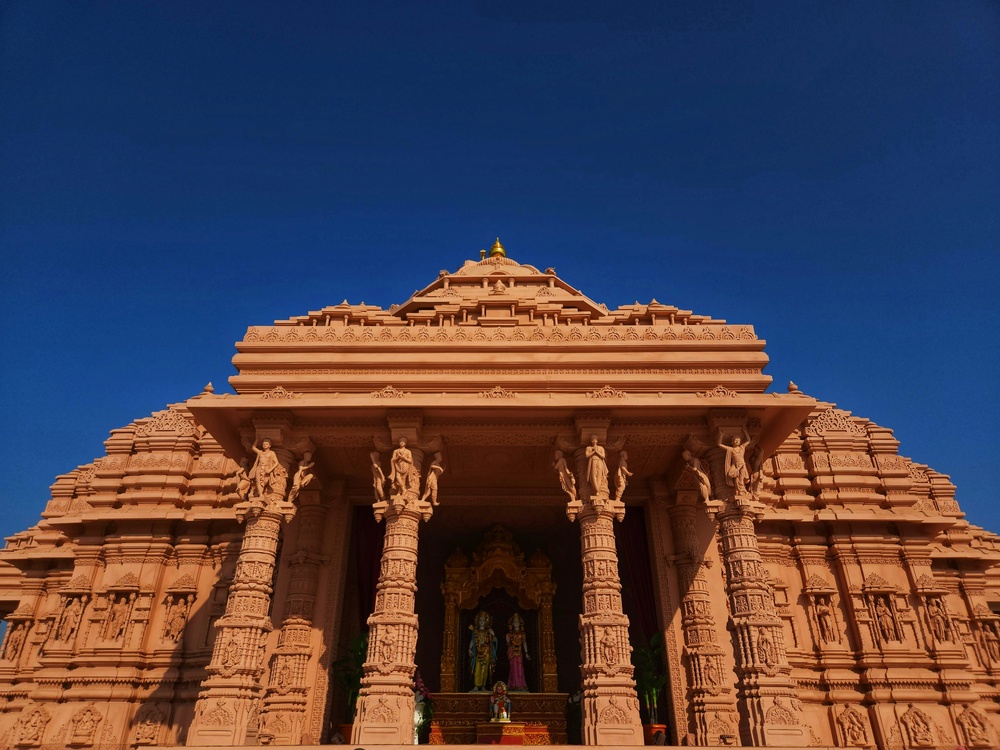When Is the Best Time to Visit Ayodhya for a Peaceful Pilgrimage?
Ayodhya, known as the birthplace of Lord Rama, is one of the most sacred pilgrimage destinations in India. Every year, thousands of devotees and spiritual seekers visit this ancient city to experience its divine energy, historic temples, and serene ghats. However, if you are looking for a peaceful pilgrimage without heavy crowds or weather discomfort, understanding the Best Time to Visit Ayodhya is essential. Here is a detailed seasonal guide to plan your spiritual journey perfectly.
Ayodhya in Summer (March to June)
Weather: Summers in Ayodhya are extremely hot, with daytime temperatures often soaring between 35°C and 45°C. The heat becomes intense during May and June, making long temple visits and walking tours uncomfortable for many pilgrims.
Experience: Despite the heat, Ayodhya celebrates Ram Navami during late March or early April with immense devotion. The city comes alive with spiritual processions, rituals, and kirtans at Ram Janmabhoomi, Hanuman Garhi, and other major temples. If you can tolerate high temperatures, Ram Navami is a spiritually powerful time to visit.
Peace Factor: While Ram Navami attracts huge crowds, the rest of the summer is relatively less crowded due to the harsh weather. However, heat exhaustion can be a concern, making summer not the Best Time to Visit Ayodhya for a peaceful pilgrimage.
Travel Tip: If travelling in summer, plan temple visits during early mornings or evenings, wear light cotton clothes, and keep yourself hydrated at all times.
Ayodhya in Monsoon (July to September)
Weather: The monsoon season brings moderate rainfall, with temperatures ranging from 25°C to 35°C. The refreshing showers cleanse the city, making temples and ghats look rejuvenated.
Experience: Monsoon is not peak tourist season, so you will find less crowded temples, peaceful ghats, and a calmer spiritual environment. The greenery around the Sarayu river enhances the city’s natural beauty, making it a serene time for meditation and reflection.
Peace Factor: This season is ideal for those looking to avoid crowds. However, heavy rain spells can sometimes interrupt local sightseeing, temple visits, and river rituals.
Travel Tip: Carry umbrellas, raincoats, and waterproof shoes. Check the weather forecast before planning your day’s itinerary to avoid inconvenience.
Ayodhya in Winter (October to February)
Weather: Winter is undoubtedly considered the Best Time to Visit Ayodhya, with temperatures ranging from 8°C to 25°C. The cool, pleasant climate makes temple visits and spiritual walks extremely comfortable.
Experience: During winter, the city hosts Diwali, celebrated here as Deepotsav, when millions of diyas are lit to welcome Lord Rama back to Ayodhya. The entire city glows with spiritual energy, cultural performances, and laser shows, attracting large crowds.
Peace Factor: While Deepotsav and Makar Sankranti in January bring many pilgrims, the rest of the winter season is peaceful and less crowded compared to peak festival days. Early mornings are misty and serene, ideal for spiritual reflection, prayers, and visiting ghats along the Sarayu river.
Travel Tip: Carry light woollens, especially for early mornings and evenings. Book hotels in advance if travelling during Diwali or Makar Sankranti to avoid last-minute unavailability.
Month-wise Quick Guide for Peaceful Pilgrimage
| Month | Weather | Peace Factor & Highlights |
| March – April | Warm to hot (28°C-38°C) | Ram Navami crowds; otherwise calm early March |
| May – June | Very hot (35°C-45°C) | Least crowded but harsh weather |
| July – September | Warm, rainy (25°C-35°C) | Less crowded, peaceful monsoon ambiance |
| October – February | Cool & pleasant (8°C-25°C) | Ideal weather, peaceful except festival dates |
Which Season is Best for a Peaceful Pilgrimage to Ayodhya?
If your priority is peace, comfort, and minimal crowds, the post-monsoon months of October and November (excluding Diwali dates) and early winter months of December and January (excluding Makar Sankranti) are ideal.
During these months:
- Weather is pleasant, neither too cold nor hot.
- Crowds are manageable, ensuring quiet temple darshans and ghats walks.
- Spiritual ambience remains vibrant, perfect for reflection, prayer, and meditation.
Why Winter is Considered the Best Time to Visit Ayodhya
- Comfortable Weather: Ideal for long temple visits, walking tours, and sitting peacefully on the ghats without sweating or feeling exhausted.
- Clear Skies: Perfect for witnessing sunrise and sunset rituals along the Sarayu river.
- Festive Spirituality: Even if you avoid festival days, the overall winter months have a vibrant spiritual vibe with devotional music and peaceful temple rituals.
- Less Risk of Rain or Heat Exhaustion: Ensures uninterrupted travel plans.
Final Tips for a Peaceful Ayodhya Pilgrimage
✅ Visit temples early morning (5 AM – 8 AM) for peaceful darshan and a serene atmosphere.
✅ Avoid festival days if you prefer quiet, as Diwali and Ram Navami bring massive crowds.
✅ Book hotels near Ram Janmabhoomi or Hanuman Garhi for easy walking access to major temples.
✅ Dress modestly in traditional Indian attire for temple visits.
✅ Hire a local guide for half a day to understand Ayodhya’s deep mythological and historical significance without wandering in confusion.
Conclusion
Ayodhya remains a timeless destination for spiritual seekers. While each season offers a unique perspective, October to February is widely considered the Best Time to Visit Ayodhya for a peaceful pilgrimage. Cool breezes, calm temples, and the city’s divine aura create the perfect environment to immerse yourself in prayer, devotion, and self-reflection. Plan your pilgrimage wisely to experience the eternal tranquillity and blessings of Lord Rama in the sacred land of Ayodhya.



